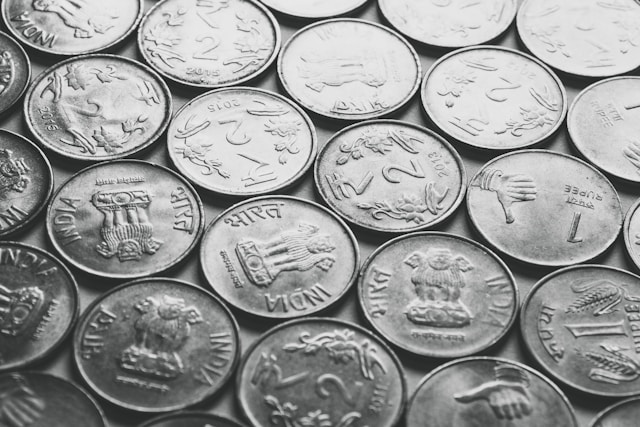Asia is a diverse continent with a rich economic landscape. Many countries use distinct currencies that reflect their histories, cultures, and financial systems. Whether you’re a UK traveller planning a holiday or a businessperson looking to engage in trade, understanding the major currencies in Asia can help you navigate transactions smoothly.
In this guide, we explore some of the key currencies used across Asia, their historical backgrounds, exchange rate insights, and practical tips for handling money while visiting these regions.
The Major Currencies of Asia
1. Cambodian Riel (KHR)
The official currency of Cambodia, the Cambodian Riel (KHR), is primarily used for small transactions, while the US Dollar is widely accepted in larger commercial dealings.
- Symbol: ៛
- Exchange Rate: Fluctuates, but often trades at around 4,000 KHR to 1 USD.
- Usage: While the Riel is common for everyday purchases, most major hotels and businesses accept US Dollars.
For a deeper look at the Cambodian Riel, visit our dedicated resource on Cambodia’s currency.
2. Indonesian Rupiah (IDR)
The Indonesian Rupiah (IDR) is the currency of Indonesia, a country known for its bustling markets and tourism hotspots like Bali and Jakarta.
- Symbol: Rp
- Exchange Rate: A highly devalued currency, with 1 GBP equalling thousands of Rupiah.
- Usage: Banknotes come in high denominations, often requiring careful handling for large purchases.
Learn more about the Indonesian Rupiah in our resource on Indonesia’s currency.
3. Japanese Yen (JPY)
Japan’s currency, the Japanese Yen (JPY), is one of the most widely traded currencies in the world and holds significant global economic importance.
- Symbol: ¥
- Exchange Rate: Tends to fluctuate against the GBP, but remains relatively strong.
- Usage: Cash remains a preferred method of payment in Japan despite the country’s advanced technology.
For more details on the Japanese Yen, check out our resource on Japan’s currency.
4. Jordanian Dinar (JOD)
The Jordanian Dinar (JOD) is the official currency of Jordan, a Middle Eastern country with a stable economy.
- Symbol: JD
- Exchange Rate: Pegged to the US Dollar at a fixed rate.
- Usage: Highly valued and stable, making it a strong currency for regional transactions.
Discover more about the Jordanian Dinar in our Jordan currency resource.
5. Laotian Kip (LAK)
The Laotian Kip (LAK) is the currency of Laos, a country known for its scenic landscapes and cultural heritage.
- Symbol: ₭
- Exchange Rate: Often trades at over 10,000 LAK per USD.
- Usage: Used domestically, though Thai Baht and US Dollars are sometimes accepted in tourist areas.
For more information, visit our Laos currency resource.
6. Malaysian Ringgit (MYR)
The Malaysian Ringgit (MYR) is the official currency of Malaysia and plays a significant role in Southeast Asian trade.
- Symbol: RM
- Exchange Rate: Relatively stable against the GBP and USD.
- Usage: Widely used across the country, with digital payments becoming increasingly common.
Explore more about the Malaysian Ringgit in our Malaysia currency guide.
7. Nepalese Rupee (NPR)
The Nepalese Rupee (NPR) is the currency of Nepal, a country famous for the Himalayas and Mount Everest.
- Symbol: Rs
- Exchange Rate: Pegged to the Indian Rupee at a fixed rate.
- Usage: Commonly used across Nepal, though Indian Rupees are also widely accepted.
Learn more about the Nepalese Rupee in our Nepal currency resource.
8. Singapore Dollar (SGD)
The Singapore Dollar (SGD) is a strong and stable currency, making Singapore a global financial hub.
- Symbol: S$
- Exchange Rate: Closely managed by the Monetary Authority of Singapore.
- Usage: Heavily used in international trade and travel.
Discover more about the Singapore Dollar in our Singapore currency guide.
9. Sri Lankan Rupee (LKR)
The Sri Lankan Rupee (LKR) is the currency of Sri Lanka, an island nation with a developing economy.
- Symbol: Rs
- Exchange Rate: Has experienced fluctuations due to economic changes.
- Usage: Cash is commonly used, but digital transactions are growing in urban areas.
Read more about the Sri Lankan Rupee in our Sri Lanka currency resource.
10. Vietnamese Dong (VND)
The Vietnamese Dong (VND) is one of the lowest-valued currencies in the world in terms of exchange rates.
- Symbol: ₫
- Exchange Rate: High denominations, with 1 GBP equalling thousands of VND.
- Usage: Cash transactions dominate, though card payments are growing in major cities.
For further insights, visit our Vietnamese Dong resource.
Currency Exchange Tips for UK Travellers
- Exchange in advance: Convert GBP to local currency before traveling to get the best rates.
- Use ATMs wisely: Local ATMs may offer competitive exchange rates, but check for fees.
- Carry small denominations: Many Asian countries rely heavily on cash transactions.
- Know the exchange rate: Keep track of current rates to avoid overpaying in exchanges.
- Use currency apps: Apps like XE Currency can help monitor real-time exchange rates.
For more insights on handling foreign exchange, visit our Beyond Borders currency blog.
Frequently Asked Questions
1. Which Asian currency is the strongest?
The Singapore Dollar (SGD) and the Japanese Yen (JPY) are among the strongest currencies in Asia due to their stable economies and global trade influence.
2. Can I use British Pounds (GBP) in Asia?
British Pounds are not widely accepted in most Asian countries, so it’s best to exchange GBP for local currency before traveling.
3. Are digital payments common in Asia?
Yes, many countries like Singapore, Japan, and Malaysia have widespread digital payment systems, but cash remains dominant in some regions.
4. What is the best way to exchange money in Asia?
Using ATMs or exchanging money at reputable banks and currency exchange counters usually offers the best rates.
5. Which Asian country has the lowest-valued currency?
The Vietnamese Dong (VND) has one of the lowest exchange rates, with very high denomination banknotes.
Understanding currency variations in Asia can help UK travellers and businesses make informed financial decisions. Whether you’re exploring Japan or investing in Singapore, staying updated on exchange rates and payment methods will ensure smooth transactions.
